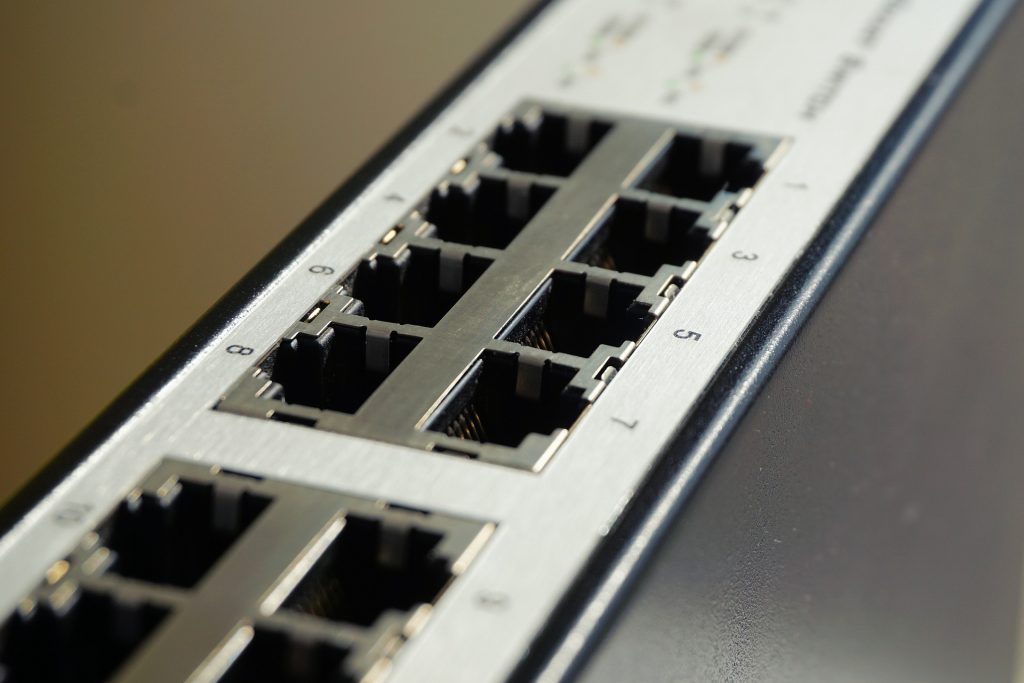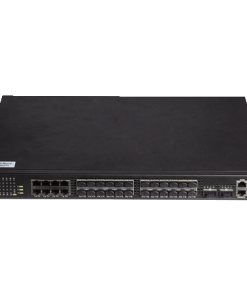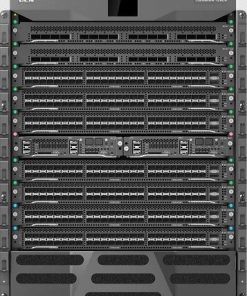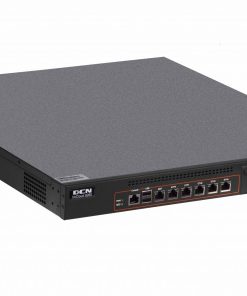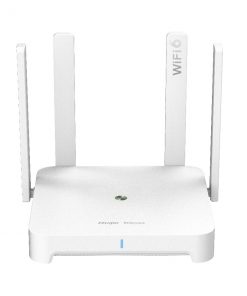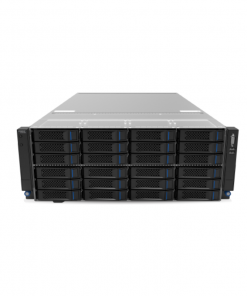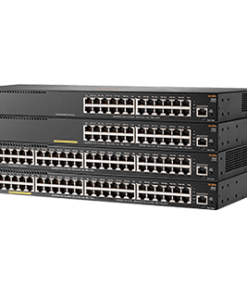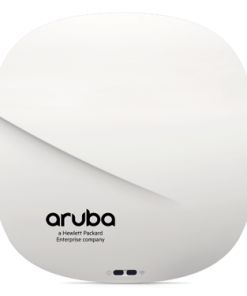In this discussion, we will discuss more about a network device called a switch and Definition of Switch.
In addition to understanding switches, we will also describe the various switch functions as well as the types of switches, how switches work, and the kinds so that we can better understand and understand what a switch device is.
In addition to the definition of a switch from its own device, a switch also knows the term switching. This circuit switching network is used to connect pairs of terminals by providing separate circuits or channels and also in real time directly connected:
- The “Holded” status on a circuit means that it cannot be used by a number of circuits or channels that are smaller than the capacity.
- Circuit switching network performance depends on loss, not delay, but digital switching can also cause delay.
There are 3 phases contained in circuit switching, namely;
- circuit establishment
- data transfer
- circuit termination
The circuit switching network can be used for the following connection:
- Real time-speech (ex: telpon)
- Real time-data very high bit transmitted
Check NetData Router Products here:
Table of Contents
What is a switch
What is a switch? The definition of a switch in general is a computer network component that has a function to connect several network devices such as computers and others.
In order to be able to exchange packets, either receiving, processing, or forwarding data to the target device.
Another opinion about the definition of a switch is a type of computer network component that can be used as a link between several hubs in the form of a larger computer network and requires a large enough bandwidth.
In contrast to the HUB where this switch works more efficiently, directed, and directly at the intended address.
This Definition of Switch works both in exchanging data, processing, or sending data. The switch can also detect the destination of the data so that it can prevent collisions when the data is sent.
Definition of Switching
Definition of switching is an electronic system that can be used as a liaison for communication lines between devices.
This switching network is a network that can allocate a dedicated circuit between nodes and terminals for users to communicate with each other.
A dedicated circuit that cannot be used by other users until it is removed and new connections can be established.
Even though there is no communication connected to a dedicated circuit, this channel still cannot be used by other users. This channel can only be used if the new user is called an idle channel.
Another definition of switching, namely a method for establishing, monitoring progress, and closing connections is to use a separate channel for control purposes.
For example, the connection between telephone exchanges using CCS7 is used for call setup communication and control information as well as using TDM for data transportation on the circuit.
Switch Functions
After we discuss the definition of switches, the next switch functions are discussed. The function of the switch in a computer network is as a concentrator that receives and shares data between computer devices on the network.
The following are some of the Definition of Switch functions:
- Address Learning; as a registrar of the MAC address of a network device connected to it. When the switch receives data, the switch will record the sender’s MAC address and learn where this data will be sent.
- Filtering / Forwarding Frame Data; This switch can also filter and forward data packets to the intended address, choose which MAC address and port. So that the switch can process data transmission, the possibility of a collision is minimal.
- Looping Avoidance; switch is able to prevent looping, this looping occurs when the received data does not know where to send it. The data received will be forwarded to the destination address by blocking one of the ports connected to other devices.
Types of Switches
As with the previous understanding of switches, these switches have several types that are divided according to their categories.
In general, these switches are divided into two types, namely according to the OSI (Open System Interconnection), where there are two layer 2 and layer 3
- switches. Layer 2 switches: switches whose data link layer operations are located at the OSI model layer. Switches can forward data packets by looking at the destination MAC address, switches and can be a bridge function between LAN (Local Area Network) segments, even though the switch sends data packets by looking at the address to be addressed without knowing the network protocol used.
- Layer 3 switches: switches that are located at the network layer that are at the layer of the OSI model. This switch is able to forward data packets using an IP address. Layer 3 switches are also referred to as routing switches or multilayer switches.
In addition there are several types or other types of switches, namely:
ATM Switch
ATM (Asynchronous Transfer Mode) is a transfer mode that is made in the form of cells. What is meant by asynchronous is repeating cells that contain information from the user by not using periodically.
ISDN Switch
ISDN (Integrated Services Digital Network) Switch or also known as Frame Relay Switch Over ISDN is used on service providers that work like a switch.
However, there is no difference in the interface used in the form of an ISDN router or an ISDN card.
DSLAM Switch
A Digital Subscriber Line Access Multiplexer used on telephone lines to make internet connection faster.
This Digital Subscriber Line Access Multiplexer is a network device that is usually used in telephone exchanges from service providers.
User Digital Subscriber Lines (DSLs) with high-speed Internet backbone lines employ multiplexing techniques.
By placing the DSLAMs in a remote location with a telephone exchange so that the DSL service provider to the previous location is out of effective coverage.
Ethernet Switch
Ethernet switch is a LAN interconnection device that works at the data-link layer or the second layer of the OSI model. This switch is basically like a bridge.
However, it supports a larger number of connected LAN segments that have more management.
Modern LANs are increasingly undergoing renewal, by installing ethernet switches and bridges in the hubs and repeaters. This logical partition represents traffic to the path of only a few network segments on the path between the source and destination.
This will reduce bandwidth so that it is not wasted as a result of sending packets to parts of the network that do not need to receive data.
There is also the benefit of increased security where reduced users can tap-in to other users’ data.
Better management and minimize network problems. And also the ability to perform operations in multiple links at full duplex.
Why should you use a switch?
Using a switch is more widely used than HUB. This is because switches are easier to use than HUB. Switches have very fast transfer speeds and are also cheaper than HUBs. The switch is indeed very suitable for use for a home or a business that has a simpler internet topology.
Switches are able to recognize network topologies at multiple layers instead of using a HUB. Therefore, the data package is able to arrive immediately at its destination. Basically, Hub and Switch have the same benefits. However, using the Switch will be faster than enabling the Hub. Especially if we have a very large network.
What are the important points why you should use a Switch?
Switch uses a selection system for all devices.
Switches can select devices connected to the Switch, be it a device such as a computer or even on another switch. So, this Switch can determine which devices can access together with the Switch via the MAC Address.
Fast
data transfer The switch has fast data transfer rates. In addition, the switch can also select devices that will send or receive signals. This is because the switch will immediately send the address to be sent directly.
Modifiable setting system The setting
the system of this switch can not only be plug and play. However, this is why those of you who want to use a switch for the network topology that you may have in your company, it will be very appropriate to use a switch.
You can control, such as blocking and allowing which devices can be connected to the Switch.
Superior security system
Why should you use a switch? Especially for those of you who want to use it in your company? because indeed the switch has a very good security system so that unwanted things do not happen to your company.
You will not necessarily get complete data when receiving data via the Switch. Not because the Switch is unable to receive or send data in full, this is because the Switch will always check every data sent to make sure every data sent is safe.
How the Switch Works
After the device is connected to the switch, the switch records its media access control (MAC) address, a code that is entered into the device’s network interface card (NIC) attached to the ethernet cable attached to the switch. Switches use MAC addresses to identify which device outgoing packets are being sent from and where to send incoming packets.
So a MAC address identifies a physical device as opposed to a network layer (Layer 3) IP address, which can be dynamically assigned to the device and change over time.
When a device sends a packet to another device, it enters the switch and the switch reads its header to determine what to do with it. It matches the destination address or address and sends the packet out through the appropriate port leading to the destination device.
To reduce the chance of a collision between network traffic going to and from the switch and devices connected at the same time, most switches offer full duplex functionality where packets coming from and going to the device have access to the full bandwidth of the switch. connection. (Imagine two people talking on a cell phone as opposed to a walkie-talkie).
While it is true that switches operate at Layer 2, switches can also operate at Layer 3, which is necessary for them to support virtual LANs (VLANs), logical network segments that can span subnets. In order for traffic to move from one subnet to another, it must pass between switches, and this is facilitated by the capabilities of the router built into the switch.
![]()

